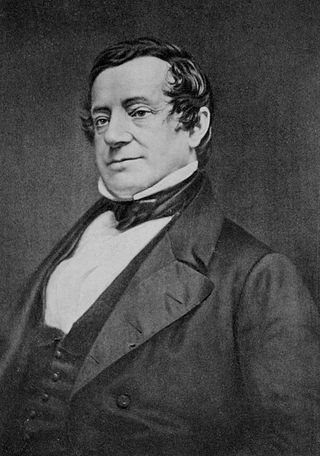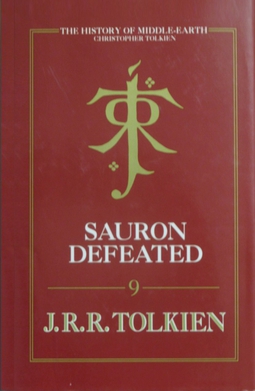
Christopher Columbus was an Italian explorer and navigator from the Republic of Genoa who completed four Spanish-based voyages across the Atlantic Ocean sponsored by the Catholic Monarchs, opening the way for the widespread European exploration and colonization of the Americas. His expeditions were the first known European contact with the Caribbean and Central and South America.

Flat Earth is an archaic and scientifically disproven conception of the Earth's shape as a plane or disk. Many ancient cultures subscribed to a flat-Earth cosmography, notably including ancient near eastern cosmology. The model has undergone a recent resurgence as a conspiracy theory.

Washington Irving was an American short-story writer, essayist, biographer, historian, and diplomat of the early 19th century. He wrote the short stories "Rip Van Winkle" (1819) and "The Legend of Sleepy Hollow" (1820), both of which appear in his collection The Sketch Book of Geoffrey Crayon, Gent. His historical works include biographies of Oliver Goldsmith, Muhammad, and George Washington, as well as several histories of 15th-century Spain that deal with subjects such as the Alhambra, Christopher Columbus, and the Moors. Irving served as American ambassador to Spain in the 1840s.

The History of Middle-earth is a 12-volume series of books published between 1983 and 1996 by George Allen & Unwin in the UK and by Houghton Mifflin in the US. They collect and analyse much of J. R. R. Tolkien's legendarium, compiled and edited by his son Christopher Tolkien. The series shows the development over time of Tolkien's conception of Middle-earth as a fictional place with its own peoples, languages, and history, from his earliest notions of "a mythology for England" through to the development of the stories that make up The Silmarillion and The Lord of the Rings. It is not a "history of Middle-earth" in the sense of being a chronicle of events in Middle-earth written from an in-universe perspective; it is instead an out-of-universe history of Tolkien's creative process. In 2000, the twelve volumes were republished in three limited edition omnibus volumes.

Samuel Eliot Morison was an American historian noted for his works of maritime history and American history that were both authoritative and popular. He received his Ph.D. from Harvard University in 1912, and taught history at the university for 40 years. He won Pulitzer Prizes for Admiral of the Ocean Sea (1942), a biography of Christopher Columbus, and John Paul Jones: A Sailor's Biography (1959). In 1942, he was commissioned to write a history of United States naval operations in World War II, which was published in 15 volumes between 1947 and 1962. Morison wrote the popular Oxford History of the American People (1965), and co-authored the classic textbook The Growth of the American Republic (1930) with Henry Steele Commager.
Rowan Gavin Paton Menzies was a British submarine lieutenant-commander who authored books claiming that the Chinese sailed to America before Columbus. Historians have rejected Menzies' theories and assertions and have categorised his work as pseudohistory.
J. R. R. Tolkien came to feel that the flat earth cosmology he embodied in his legendarium would be unacceptable to a modern readership. In The Silmarillion, Earth was created flat and was changed to round as a cataclysmic event during the Second Age in order to prevent direct access by Men to Valinor, home of the immortals. In the Round World Version, Earth is spherical from the beginning.

Guanahaní was the Taíno name of an island in the Bahamas that was the first land in the New World sighted and visited by Christopher Columbus' first voyage, on 12 October 1492. It is a bean-shaped island that Columbus called San Salvador. Guanahaní has traditionally been identified with Watlings Island, which was officially renamed San Salvador Island in 1925 as a result, but modern scholars are divided on the accuracy of this identification and several alternative candidates in and around the southern Bahamas have been proposed as well.
Events from the year 1828 in the United States.

The ethnic or national origin of explorer Christopher Columbus has been a source of speculation since the 19th century. The consensus among historians is that Columbus's family was from the coastal region of Liguria, that he was born and spent his boyhood and early youth in the Republic of Genoa, in Genoa, in Vico Diritto, and that he subsequently lived in Savona, where his father Domenico moved in 1470. Much evidence derives from documents concerning Columbus's immediate family connections in Genoa and opinions voiced by contemporaries on his Genoese origins, which few dispute.

The Discoverers is a non-fiction historical work by Daniel Boorstin, published in 1983, and is the first in the Knowledge Trilogy, which also includes The Creators and The Seekers. The book, subtitled A History of Man's Search to Know His World and Himself, is a history of human discovery. Discovery in many forms is described: exploration, science, medicine, mathematics, and more-theoretical ones, such as time, evolution, plate tectonics, and relativity. Boorstin praises the inventive, human mind and its eternal quest to discover the universe and humanity's place in it.
Jeffrey Burton Russell was an American historian of medieval Europe and religious studies scholar.

The myth of the flat Earth, or the flat-Earth error, is a modern historical misconception that European scholars and educated people during the Middle Ages believed the Earth to be flat.

Laurence Bergreen is an American historian and author.

Inventing the Flat Earth (ISBN 978-0-275-95904-3) is a 1991 book by historian Jeffrey Burton Russell debunking the notion that medieval Christians believed the Earth was flat.
Adrián de Moxica was a Spanish nobleman and explorer.

A History of the Warfare of Science with Theology in Christendom was published in two volumes by Andrew Dickson White, a founder of Cornell University, in 1896. White chronicles the gradual emancipation of science from theology in various fields.

Christopher Columbus Before the Council of Salamanca is an oil-on-canvas painting by the German-American artist Emanuel Leutze, created in 1841. It is held in the Louvre, in Paris. It was lent to the Musée des beaux-arts de Lyon in 2014 for its exhibition L'invention du Passé. Histoires de cœur et d'épée 1802–1850.
Bradley J. Birzer is an American historian. He is a history professor and the Russell Amos Kirk Chair in American Studies at Hillsdale College, the author of five books and the co-founder of The Imaginative Conservative. He is known also as a Tolkien scholar.














